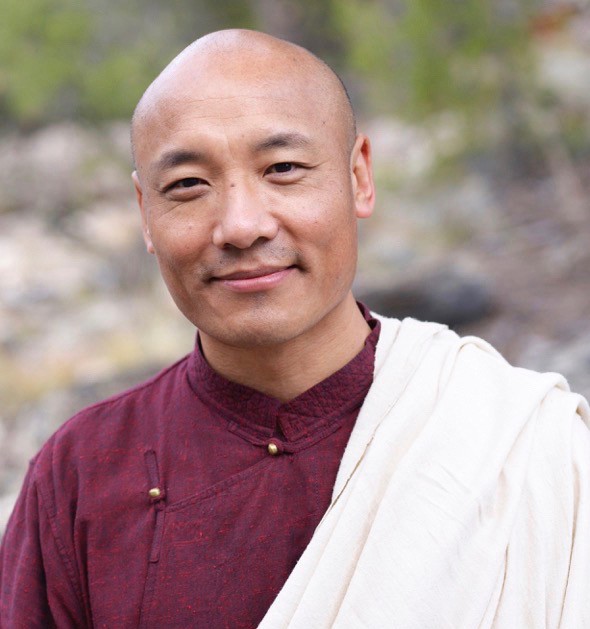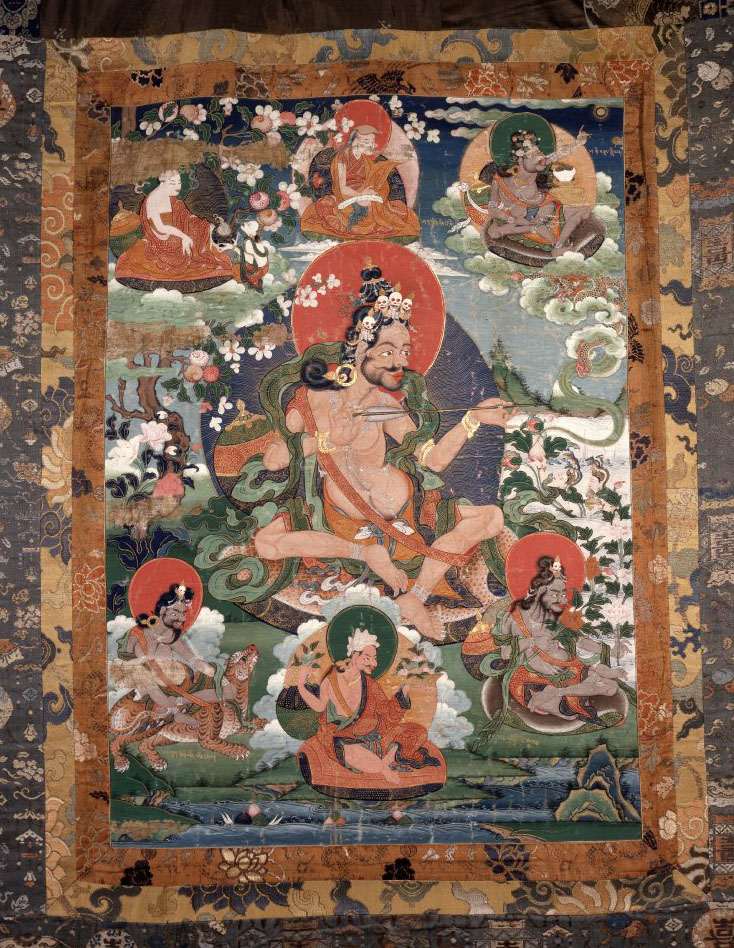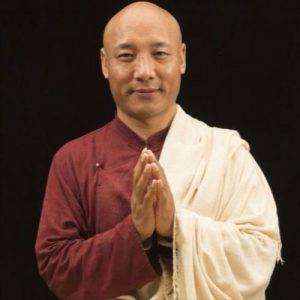
Upon visiting temples in the Himalaya, one will find images of deities that won’t be found at Buddhist temples in Thailand or Sri Lanka, even though devotees who go to these temples share a common identity: being Buddhist and revering the same founder of their spiritual tradition, the Lord Buddha. This might cause confusion for someone who is quite new to the world of Buddhism. One might wonder why one religion can have such contrasting iconographies. This has to do with the fact that Buddhism is extremely diverse in its doctrines and practices, and allows space for change and evolution. There is no singe book or Buddhist bible that everyone follows as the only true words of the Buddha. To some, the sutras are perhaps closest to the idea of a Buddhist bible, if there was a such thing in first place. The sutras are often attributed to the Buddha, but they’re numerous and seemingly quite different from each other. Pali and Sanskrit sutras are perfect examples of that.
Vajrayana is a tradition that is embraced by the peoples of the Himalayan region and as far away as Mongolia. It has a distinctive doctrine and set of practices that won’t be found in other traditions. Vajrayana developed in India and started flourishing in Tibet around the eighth century. It didn’t survive in other Asian countries, even though there were periods when it was embraced by a number of cultures. Today, some form of Vajrayana is still practiced in countries such as Japan, yet the heart of Vajrayana, which is called Anuttarayoga Tantra or the Unsurpassable Tantra, mainly survived in the Himalayan region.
Buddhist tantras are scriptures that contain the wisdom of Vajrayana. They are recordings of the Buddha’s teachings and are equally the words of Buddha as are the Pali or Sanskrit sutras. The Buddha was the one who first taught Vajrayana in the world. The Buddha was such a skillful teacher that he taught the Dharma in accordance with the capacity of each individual. He felt that Vajrayana was so profound that many would not understand it, or would misunderstand it. He taught it to selected disciples who had the capacity to comprehend its profundity, and they carried the teachings and transmitted them to their followers.
Vajrayana is vast topic that cannot be deciphered in few words. There is a famous anecdote in the tantric scriptures that might at least illuminate some of its ethos. Once, a king named Indrabhuti asked the Buddha to show him the path to inner liberation. Immediately, the Buddha asked him to become a monk. The king declined such an invitation and requested that the Buddha teach him a path that did not require abstinence from sensual pleasure. The Buddha responded by teaching the Vajrayana path. The story doesn’t capture all the nuances of Vajrayana, it simply points out an important aspect: not rejecting the richness and beauty of human life that is incarnated in this very tangible physical form; embracing them while learning not to let attachment to them bind us. Vajrayana asserts that the sacred is everywhere and is found in ordinary existence, transcending the duality between sacred and ordinary.
Vajrayana employs a host of techniques for karmic purification and inner transformation, such as deity yoga, which involves the creation of mandalas, mantra recitations, and sacred movement utilizing the symbiotic relationship between body and consciousness. These techniques to purify our karmic patterns can expedite the process of awakening, since such psychosomatic patterns can otherwise elude our cognizant self-reflection. Unlike some other approaches, Vajrayana practice invites us to not suppress human emotions, but to fully embrace them in the field of non-grasping awareness so that they no longer remain an impediment. In other words, emotions won’t bind us and can be transmuted into enlightened experience, since their very nature is not intrinsically impure.

c. 18th century. From wikimedia.org
In the ancient land of India, filled with a long history of spiritual and cultural traditions, the Brahmanic religions played an important role in creating a rich civilization that was accompanied by some not-so-benevolent dogmas, such as believing in an intrinsic hierarchy between species. In such manmade paradigms, some are considered more divine than others, with logic heavily reliant on myth. The advent of Buddhism became not only the birth of a new spiritual tradition, but a counter-cultural movement that challenged all conventions revered by society as the divine order. The Buddha accepted everyone—regardless of their gender or caste—into the sangha, which is the holy community. Everyone was given the right to play any role in his sangha, even becoming a teacher, which is the most revered role. Even with this development, some Buddhists held onto belief systems that advocated gender inequality in the divine hierarchy. Tantric Buddhism teaches that all beings are intrinsically equal and that their true nature is sacred. To counter sexism, one of the main precepts is not to disparage women in general, and to view the female nature as sacred, as prajna or wisdom. For such an ancient tradition, this could be regarded as quite progressive, since many old religious traditions are known to harbor sexism.
In the past, tantric Buddhist practitioners often used radical means to transcend duality between the sacred and the ordinary, along with all limiting concepts and the small mind of mediocrity. There are many individuals who have epitomized such a spirit throughout history. Two who come to mind are the Indian princess Lakshminkara and the wandering yogi Saraha, the “arrow shooter.” Both were enlightened adepts; mahasiddhas who undertook certain radical actions in their lives that helped them to transcend the traps of mundane value orientations, which are not always based on wisdom or love.
Sometimes, people outside of the Vajrayana tradition might not easily understand the depth of Vajrayana extramundane theory and praxis. This is why it is called the secret Mantrayana. “Secret” here has the connotation that its profundity cannot easily be understood by everyone, and is to be kept away from those who might misunderstand it. Yet those who embrace the path of Vajrayana with the right mindset can manifest extraordinary inner transformation.
See more
Related features from BDG
Are You a Knowledge-Holder?
Yeshe Tsogyal
Poison Is Medicine: Paradox and Perception in Vajrayana Buddhism
On Prejudice, Vajrayana, and the Perception of “Otherness”














